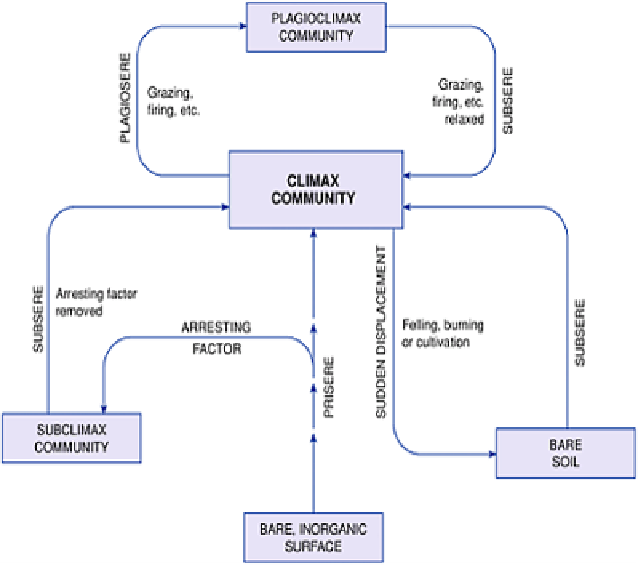Environmental Engineering Reference
In-Depth Information
Figure 21.2
Diagrammatic representation of priseres,
subseres and plagioseres.
Source: After Eyre (1968).
of plant species, together with associated soils and fauna. Each seral stage has a distinct
ecology which is ephemeral in the sense that it prepares the ground for the succeeding
ecosystem. The final end point of the succession is called the
climax community
(Figure
21.1). Considerable attention has been paid to successions in biogeography because they
reflect the dynamic nature of ecological communities, and illustrate the importance of the
time factor in the development of plant communities. Figure 21.2 has been adapted from
the work of the British biogeographer Eyre to illustrate the detailed terminology which
has built up around the theory of succession. If succession commences on a bare surface
which has not previously been occupied by a plant community, it is called a
primary
succession
or
prisere
(Plate 21.1). A new land surface of coastal sand or volcanic lava
and ash is a typical site. Primary successions on new volcanic surfaces such as Krakatoa
in the Indian Ocean, Surtsey Island in the Atlantic or Mount St Helens in the US state of
Washington are all classic examples. However, where the community develops in an area
which was previously vegetated, but from which the community was removed, the
sequence is called a
secondary succession
. Examples would include areas cleared for
farming but then abandoned to recolonization by plants and animals. Another example
would be an area of clear-felled forest (Plate 21.2), or any community destroyed by fire.

